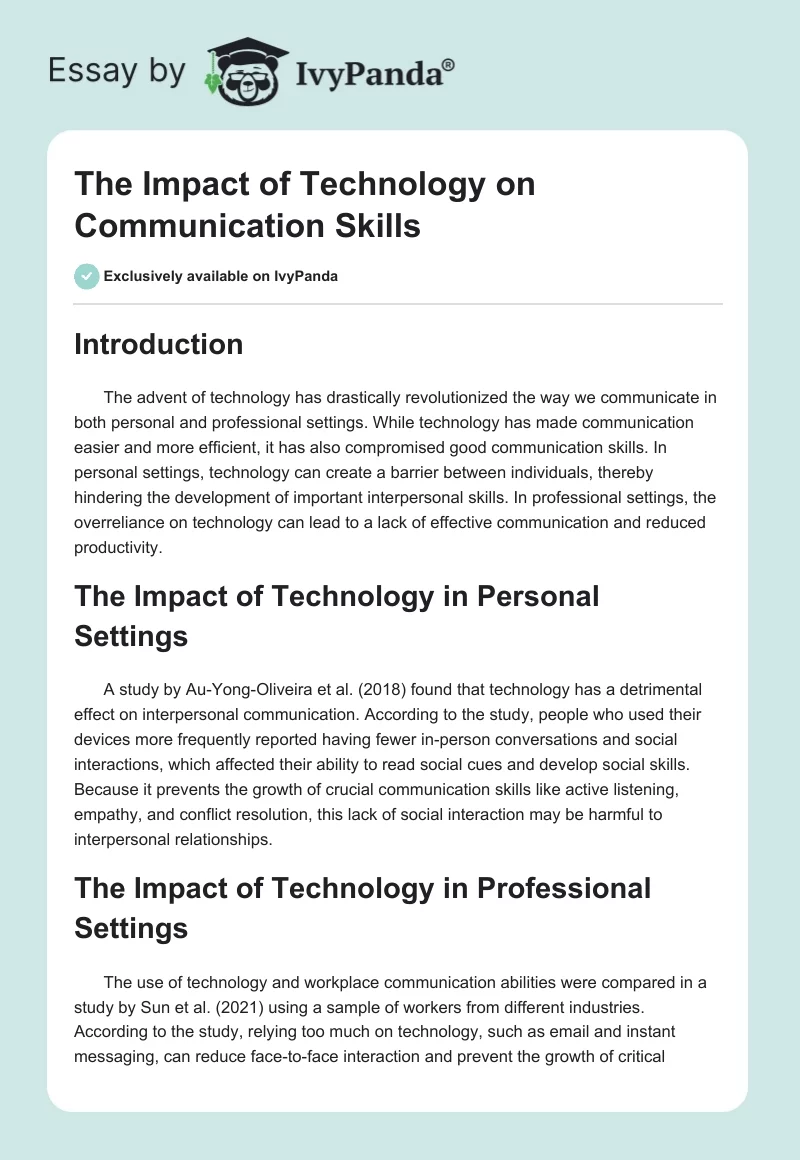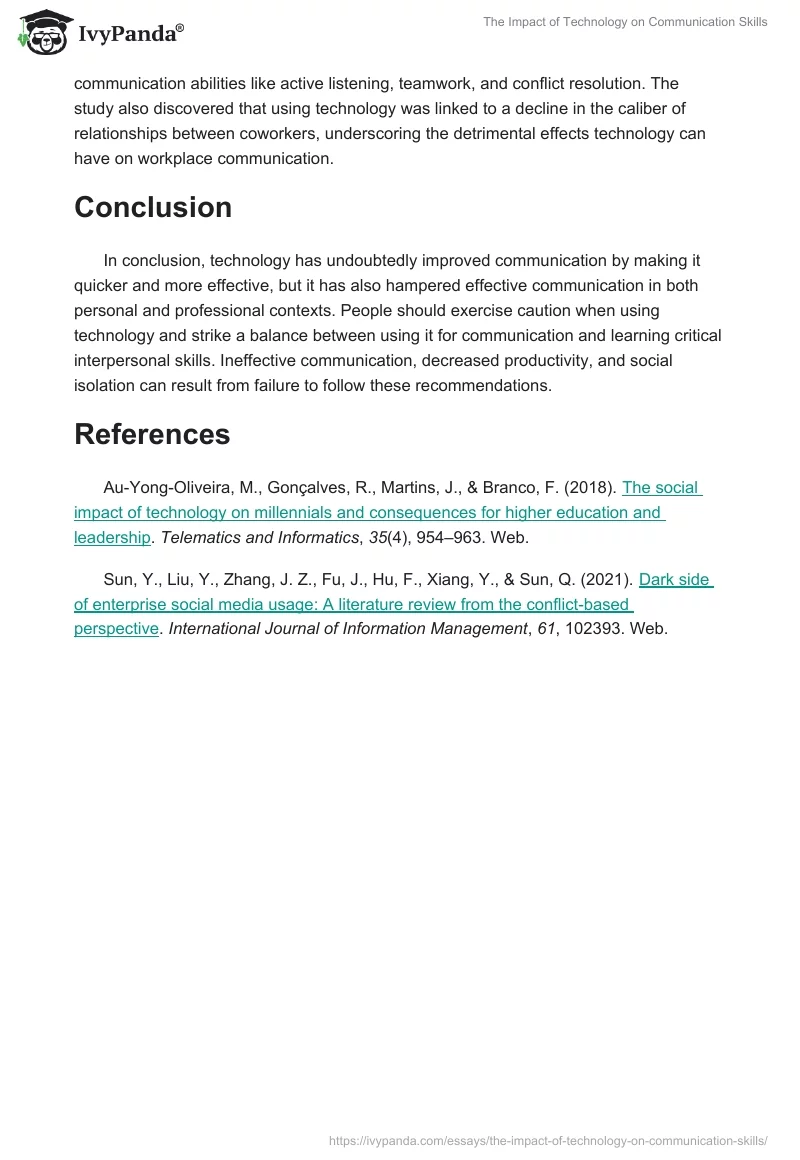Introduction
The advent of technology has drastically revolutionized the way we communicate in both personal and professional settings. While technology has made communication easier and more efficient, it has also compromised good communication skills. In personal settings, technology can create a barrier between individuals, thereby hindering the development of important interpersonal skills. In professional settings, the overreliance on technology can lead to a lack of effective communication and reduced productivity.
The Impact of Technology in Personal Settings
A study by Au-Yong-Oliveira et al. (2018) found that technology has a detrimental effect on interpersonal communication. According to the study, people who used their devices more frequently reported having fewer in-person conversations and social interactions, which affected their ability to read social cues and develop social skills. Because it prevents the growth of crucial communication skills like active listening, empathy, and conflict resolution, this lack of social interaction may be harmful to interpersonal relationships.
The Impact of Technology in Professional Settings
The use of technology and workplace communication abilities were compared in a study by Sun et al. (2021) using a sample of workers from different industries. According to the study, relying too much on technology, such as email and instant messaging, can reduce face-to-face interaction and prevent the growth of critical communication abilities like active listening, teamwork, and conflict resolution. The study also discovered that using technology was linked to a decline in the caliber of relationships between coworkers, underscoring the detrimental effects technology can have on workplace communication.
Conclusion
In conclusion, technology has undoubtedly improved communication by making it quicker and more effective, but it has also hampered effective communication in both personal and professional contexts. People should exercise caution when using technology and strike a balance between using it for communication and learning critical interpersonal skills. Ineffective communication, decreased productivity, and social isolation can result from failure to follow these recommendations.
References
Au-Yong-Oliveira, M., Gonçalves, R., Martins, J., & Branco, F. (2018). The social impact of technology on millennials and consequences for higher education and leadership. Telematics and Informatics, 35(4), 954–963. Web.
Sun, Y., Liu, Y., Zhang, J. Z., Fu, J., Hu, F., Xiang, Y., & Sun, Q. (2021). Dark side of enterprise social media usage: A literature review from the conflict-based perspective. International Journal of Information Management, 61, 102393. Web.


